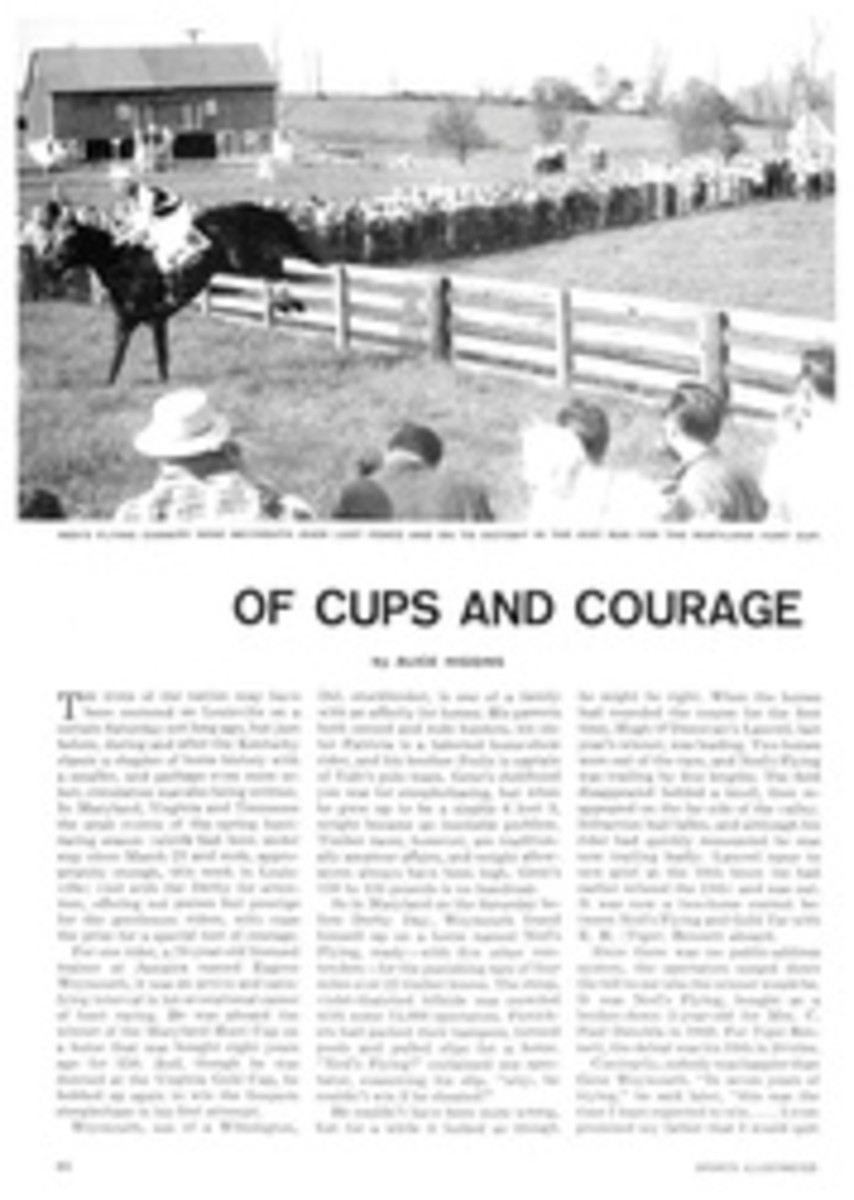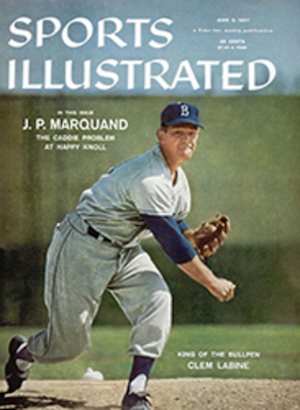
DRAMAMINE DERBY
Several years ago a Seattle skipper named Dolph Zubick, who was rated one of the best racers in Puget Sound, decided to test himself on something a little rougher than the protected waters of the sound. So he entered the Swiftsure race, a 124-mile out-and-back event that starts and finishes at Brotchie Ledge off Victoria, B.C., with the Swiftsure Bank Lightship as the turn-around point. For a beginner he did very well—third in the fleet. But after battling the boiling tides and 40-knot headwinds that can turn the Straits of Juan de Fuca into a sea witch's caldron virtually any day of spring, and skidding down the backs of giant rollers like the one bearing down on John Helsell's Westward Ho (opposite), Skipper Zubick was ready to swear off the Swiftsure for life. "I like 'em rugged," he said, "but not that rough. I'll stick to Puget Sound."
The prudent Zubick meant what he said; this year he is not among the 20 entries setting off May 31 to tackle the Swiftsure again. Those who are doing so can be definitely classed as a breed apart from ordinary men, like spelunkers or cliff climbers—addicts who are convinced the thrill is worth the pain.
Mile for mile, there is certainly no rougher race in the U.S. Seattle's Charles Ross, top winner with four victories in eight tries, calls it "more an endurance contest than a battle between individual boats." In the 1955 event, for example, John Graham's 67-foot Maruffa had weathered all but the last 100 yards in one of the roughest Swiftsures in the 27-year history of the race. She was leading the fleet, coasting alone in the comparative safety of Victoria harbor. Then a sudden squall hit her and snapped off the top 10 feet of her mainmast. With the broken spar dangling from the wires, the battered Maruffa still managed to limp home first in the fleet.
The 1956 winner, Dr. Carl Jensen's Adios (turn page), had her troubles, too. In the latter part of her long downwind run to the finish line, a crewman who was helping to lower the spinnaker dropped a line just as the big sail was coming down on the deck. In a second the spinnaker blew over the side and drifted under the keel. Dr. Jensen had to cut it loose to save the race.
An earlier winner, the sloop Gossip, was caught by the wind in the Race Passage narrows and knocked down, her mast flat to the surface, her spinnaker submerged. In two minutes her crew had cut the sheet. Dripping wet, Gossip stood up, straightened around and headed for the finish. In 1955 J. Franklin Eddy's 52-foot Dorade broached and got up even faster. "We were ready to cut the halyards and let the sails go," said Eddy, "but before the crew could get to the mast, she took off again."
All the trouble in the Swiftsure, however, does not come from the wind and tide. In the 1950 race a fog rolled in from the Pacific so thick that George Parsons' schooner Red Jacket was nearly run down by a freighter. "We heard a whistle," said Parsons. "Next thing we knew a big freighter was bearing down right on us. We turned one way, she turned the other. Closest call we ever had."
Even the lightship hasn't gotten off unscathed in these wild scrambles. The racers usually round the light at night; and unfortunately local fishermen like to anchor around the lightship, flick on their lights and go to bed, thus making it almost impossible for the racers to figure out which boat to go around. In 1955 the ketch Dragoon scored a bull's eye on the lightship. Caught in a tide, her owner, Captain W. L. B. Holmes, misjudged his drift and smashed into the lightship's steel side.
For some odd reason, none of these hardships seems to discourage the regulars, not even the twisting seas that make the Swiftsure racers the biggest crew of Dramamine eaters in the country. "You don't realize," said one, "how rough it is out there." Even the ladies who are sometimes taken along for the gruesome job of cook want to go back for more. Remembering last year's rugged go, Mrs. Thomas A. Short, cook on her husband's 48-foot cutter Tasco II, summed up the feelings of the fleet. "It was a horrible pleasure," she said. "Getting around the lightship was terrible. Those big seas....First we'd be ahead of it, then behind, then on top of it. Seemed like we'd be there forever. I'd sure like to do it again, though."
PHOTO
TOP WINNER, Charles Ross of Seattle, calls race an "endurance contest."

